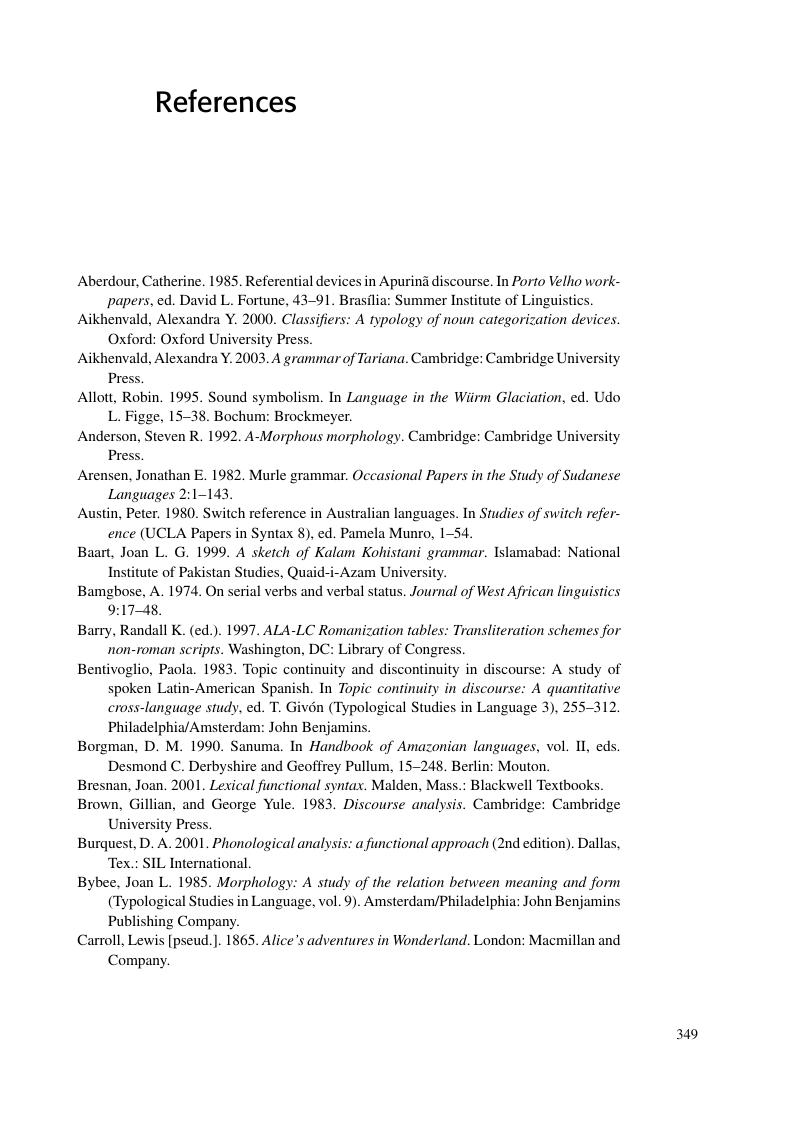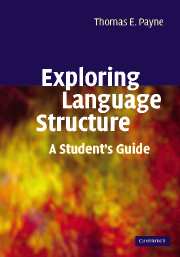Book contents
- Frontmatter
- Contents
- List of figures
- List of tables
- Preface
- Acknowledgments
- A note on transcriptions
- List of abbreviations
- 1 Introduction to morphology and syntax
- 2 Morphological processes and conceptual categories
- 3 Morphophonemics
- 4 Word classes
- 5 Exploring subclasses
- 6 Constituent structure
- 7 Language typology
- 8 Grammatical relations
- 9 Voice and valence
- 10 Multi-clause constructions
- Glossary
- References
- Subject and language Index
- References
References
Published online by Cambridge University Press: 05 June 2012
- Frontmatter
- Contents
- List of figures
- List of tables
- Preface
- Acknowledgments
- A note on transcriptions
- List of abbreviations
- 1 Introduction to morphology and syntax
- 2 Morphological processes and conceptual categories
- 3 Morphophonemics
- 4 Word classes
- 5 Exploring subclasses
- 6 Constituent structure
- 7 Language typology
- 8 Grammatical relations
- 9 Voice and valence
- 10 Multi-clause constructions
- Glossary
- References
- Subject and language Index
- References
Summary

- Type
- Chapter
- Information
- Exploring Language StructureA Student's Guide, pp. 349 - 356Publisher: Cambridge University PressPrint publication year: 2006



